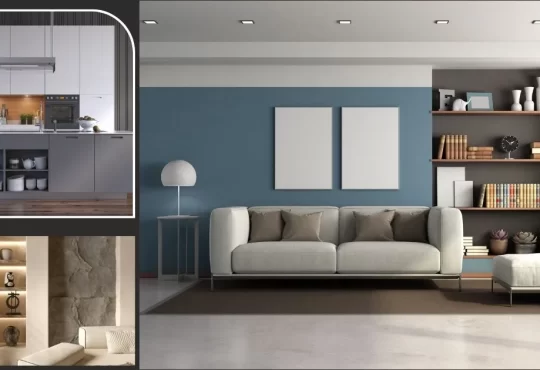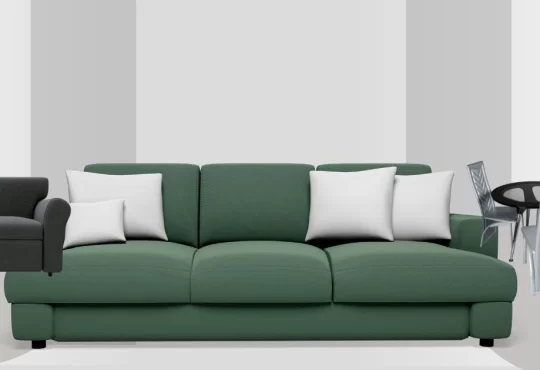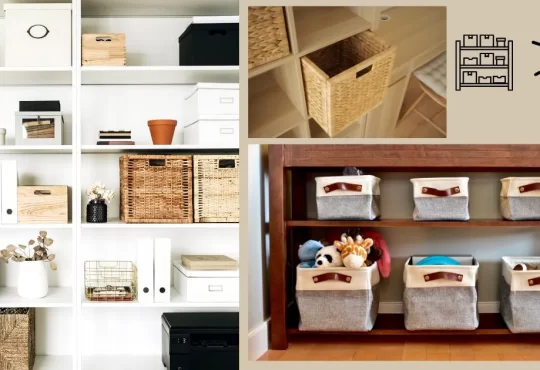Home security has become increasingly crucial amid rising burglary rates and rapid technological advancement. A dependable security system is proactive against break-ins, fire hazards, and property monitoring during absences.
This guide provides an overview of selecting a reliable home security system by highlighting essential features, various system types, and critical factors to consider. With tools ranging from high-tech surveillance to smart home compatibility, the right choice enhances safety and promotes a greater sense of security.
An Overview of the Various Types of Home Security Systems.
Grasping the various home security systems is crucial for making a well-informed choice. Each system offers different features, and the most suitable option depends on factors such as property size, specific security requirements, and daily routines.
1. Monitored vs. Unmonitored Systems
A key early step in setting up home security is deciding whether to use a monitored or unmonitored system. This essential distinction shapes how alerts are managed during a break-in or emergency. This choice dictates whether response efforts are automated through professional services or left in the hands of the user. Monitored systems operate through a central monitoring center that provides continuous, around-the-clock surveillance. In the event of an alarm trigger—such as a break-in, fire, or carbon monoxide detection—the system automatically alerts the monitoring center, which then notifies emergency services if necessary. If an alarm is triggered, the monitoring team will immediately inform you and, if required, dispatch emergency services to your location.
Unmonitored systems notify you directly, often through a mobile app, but lack the response of a monitoring team. In the event of an alarm, the responsibility to act falls entirely on the user, whether that means contacting authorities or handling the situation themselves.
Pros and Cons:
Monitored systems: Provide continuous professional surveillance and ensure quick response during emergencies, though they typically involve recurring subscription costs.
Unmonitored Systems: No monthly fees, but require a more active role in managing security.
2. Wired vs. Wireless Systems
Wired systems: Hardwired into your home’s electrical system, while wireless systems communicate via Wi-Fi or cellular networks.
Wireless Systems: These are easy to install and can be moved or upgraded quickly, but they may experience connectivity issues if the Wi-Fi goes down.
Pros and Cons:
Wired Systems: Reliable, no need for batteries, but costly and difficult to install.
Wireless Systems: Flexible, easy to install, and prone to interference or signal issues.
3. Smart Home Integration
Many modern security systems now integrate with smart home devices, allowing you to control everything from your thermostat to your locks and cameras through one platform. These systems typically connect to your home Wi-Fi and can be controlled via smartphone apps, voice assistants, or other smart home hubs.
Pros and Cons:
Smart Integration offers convenience and control but requires reliable internet and can be vulnerable to hacking if not adequately secured.
Essential Features to Consider in a Home Security System
Choosing a home security system isn’t just about picking a name brand. It’s essential to focus on the features that will protect your home and suit your lifestyle. Below are the most important features to consider.
1. Surveillance Cameras
Surveillance cameras are a cornerstone of home security, allowing you to monitor activity around your home. Modern cameras come in various types, such as doorbells, indoor, and outdoor.
Doorbell Cameras allow you to monitor and communicate with visitors from anywhere, which is excellent for answering the door when you’re not home.
Indoor Cameras: Typically smaller and designed to monitor rooms inside your home.
Outdoor Cameras: Built to withstand weather conditions and typically offer more expansive fields of view and motion sensors.
Key Features to Look For:
- High-definition video quality (1080p or higher)
- Night vision
- Two-way audio
- Motion detection
2. Sensors and Alarms
Your system can integrate various sensors and alarms designed to detect intrusions.
Window and Door Sensors: Detect unauthorized openings of entry points when the security system is activated, serving as a primary line of defense against intrusions.
Motion Sensors: Can detect movement inside the home and trigger the alarm if an intruder is detected.
Glass Break Detectors: Sensitive microphones that detect the sound of breaking glass.
Key Features to Look For:
- Easy installation
- Sensitivity settings (for avoiding false alarms)
- Battery backup in case of power failure
3. Environmental Sensors
Modern security systems monitor for intruders and can also help protect your home from environmental hazards, such as fire, carbon monoxide, and flooding.
Smoke Detectors: Alert you to fire hazards, often integrated with your security system for immediate emergency responses.
Carbon Monoxide Detectors: Notify you if dangerous levels of carbon monoxide are detected.
Flood Sensors: Help detect water damage before it becomes a serious problem, particularly in basements or kitchens.
Key Features to Look For:
- Integration with your home’s heating and cooling system for faster response
- Silent alarm capability for smoke and CO detectors
Consider Your Home’s Size and Layout
The size and layout of a home are key factors in selecting the most effective security system, as they influence the coverage and configuration needed for optimal protection.
1. Smaller Homes and Apartments
If you live in a smaller home or apartment, a more affordable system with key features like cameras, door sensors, and motion detectors may be all you need. These systems are often wireless, making them easy to install and move if necessary.
2. Larger Homes
Larger homes require extensive coverage, including multiple cameras, sensors, and possibly additional monitoring services. For multi-story homes or homes with large yards, you may need a system that can scale with your needs, offering zone-based monitoring and more customizable options.
3. Multi-Zone Security
A multi-zone security system is worth considering for homes with multiple levels or distinct areas. This allows you to arm specific regions of the house while leaving others disarmed.
Evaluating Costs: Budgeting for Your Home Security System
Home security systems come in a wide range of prices, so it’s essential to set a realistic budget before comparing systems. The two primary costs are installation and ongoing monthly monitoring services fees.
1. Installation Costs
Some security systems are designed for DIY installation, allowing homeowners to set them up independently at a lower cost, though they may require more time and effort. On the other hand, professional installation often comes with a higher fee but guarantees proper setup and access to more advanced features.
2. Monthly Monitoring Fees
Choosing a monitored system means paying a monthly fee for the monitoring service, varying from $10 to $60 or more, depending on the service level. In contrast, unmonitored systems generally do not require any ongoing fees.
3. Additional Costs to Consider
- Camera subscription services for cloud storage
- Battery replacement
- Maintenance or repair costs
Security System Brands and Providers
Several home security system providers are on the market, each offering different features and packages. Some of the most well-known companies include:
1. ADT Security
ADT is a well-known leader in home security, providing professional installation and monitoring services. Their systems are customizable to fit various home sizes and security requirements, and they also include smart home integration and environmental sensors.
2. SimpliSafe
SimpliSafe is a popular DIY home security provider known for its easy installation and no-contract policies. It offers customizable packages with professional or self-monitoring options, and the system can be expanded with additional sensors and cameras as needed.
3. Ring
Famous for pioneering the video doorbell, Ring has expanded into a comprehensive lineup of home security gear—ranging from motion sensors to complete alarm systems. Its budget-friendly, DIY-friendly approach makes it especially appealing to renters and cost-conscious households seeking flexible protection.
4. Vivint
Vivint provides all-encompassing home security solutions that seamlessly integrate with smart home technology. Their products include cameras, smart locks, and sensors, and they offer professional installation and monitoring. While they’re on the higher end of the price spectrum, Vivint’s advanced features and reliability make it a strong contender for those who want a fully integrated smart home experience.
Customer Support and Reviews
When choosing a security system, evaluating the provider’s customer support is equally important. Check for 24/7 customer service availability, installation support, and the ease of reaching a representative when needed.
What to Look For:
- Positive customer reviews and ratings
- Availability of a mobile app for easy control
- Strong warranties and return policies
How to Install and Maintain Your Home Security System
Once you’ve selected a security system, proper installation and maintenance are essential to ensure its effectiveness.
DIY vs. Professional Installation
Some security systems, like SimpliSafe and Ring, offer easy DIY installation, perfect for homeowners who want to save on installation costs. Other systems, like ADT and Vivint, typically require professional installation, guaranteeing that the system is installed correctly and that all sensors and cameras are appropriately positioned.
Maintenance Tips
Test Your System Regularly: Make sure all sensors, cameras, and alarms function as expected.
Check Batteries: Regularly replace the batteries in your cameras, sensors, and alarm panels.
Update Software: Ensure that any app or smart home integration software is updated to maintain security features.
Secure Your Home with Confidence
Choosing the right home security system is a big decision, but with careful consideration, you can select a system that fits your needs, lifestyle, and budget. Whether you prioritize ease of installation, smart home integration, or professional monitoring, there are options for every home and every preference. By understanding the types of systems available, considering key features, and evaluating the costs and customer service, you can make an informed decision that gives you peace of mind and protection for years.





